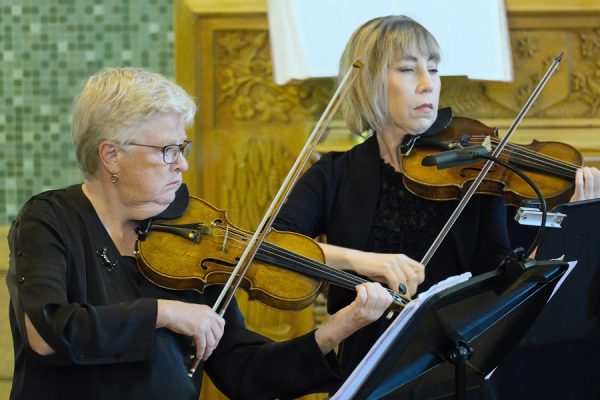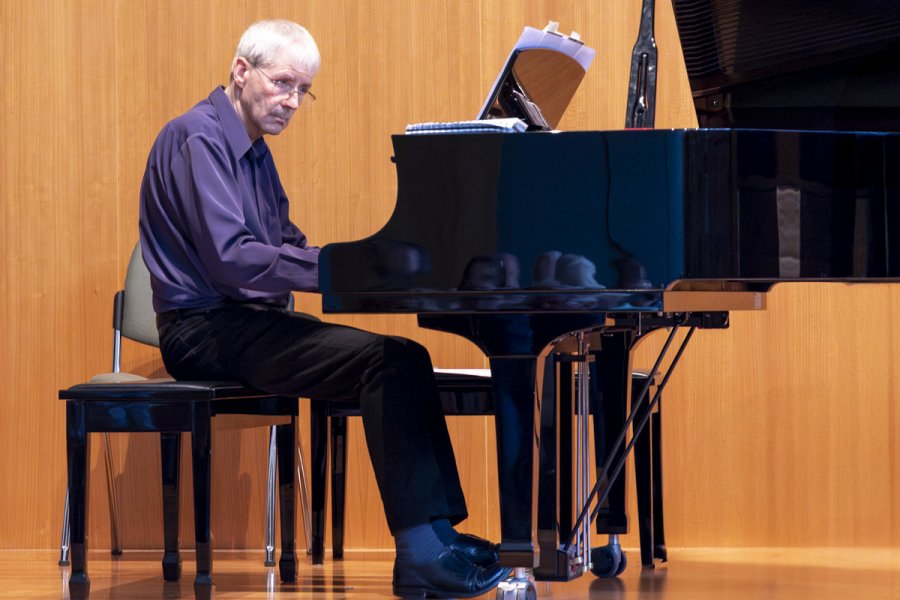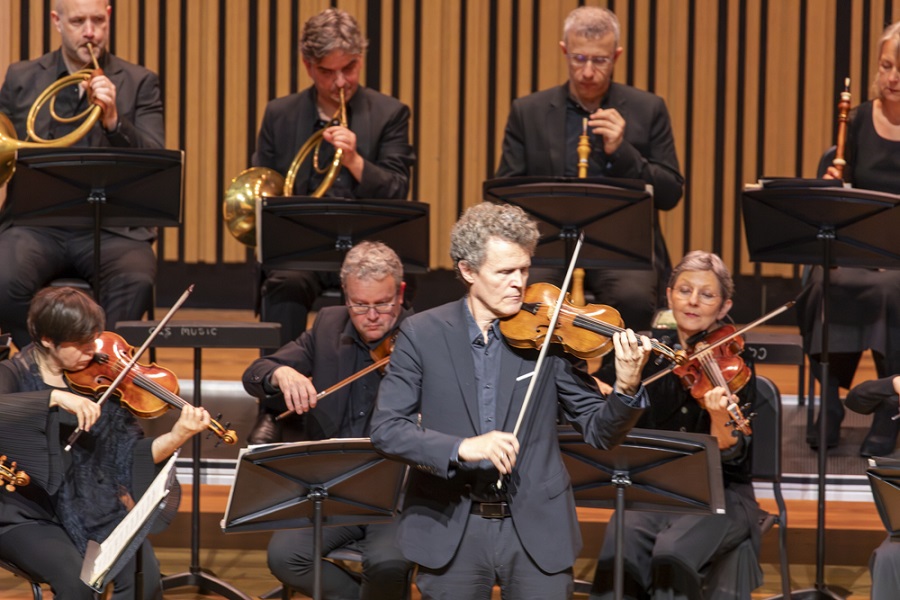
Music / Canberra Strings, “Tchaikovsky’s String Quartet No. 1”. At Wesley Church, March 6. Reviewed by ROB KENNEDY.
SINGULAR movements from a work can have an entire narrative of their own. In this Canberra Strings concert at Wesley Church they played two movements that live alone in the musical world.
Performing in Canberra Strings were Barbara Jane Gilby, violin; Pip Thompson, violin; Lucy Carrigy-Ryan, viola, and Samuel Payne, cello.
The concert began with a delightful ekphrastic work by local composer Sally Greenaway. Titled “Murray and the Mountain”, after a painting of the same name by Arthur Streeton, it was full of flowing, sweeping smooth lines and pizzicatos representing ice and icicles.
This one movement atmospheric piece offered an aural representation of a painting that captures a vast area of the Snowy Mountains with the Murray River in the foreground. It perfectly caught in music, an alluring reflection of a dreamy painting of a unique part of Australia.
Written in 1871, Tchaikovsky’s D Major “String Quartet No. 1”, is one of a handful of chamber works the composer wrote. Known for his large-scale works, such as symphonies and ballets, but even his smaller works have that symphonic sound.

The first movement, “Moderato e semplice”, is somewhat hymn-like in passages. The players produced a fitting, even tone. Their intonation, clarity, and expression were sensuous and without fault.
Famous in its own right, the second movement, the “Andante cantabile” is based on a folk song. Reportedly, when the quartet was played at a tribute concert for Leo Tolstoy, the famous author broke into tears upon hearing it.
This oh-so-sublime movement with its plaintive folk tune woven throughout the texture of the work is nothing short of musical perfection.
The third movement Scherzo, “Allegro non tanto e con fuoco”, could also be a standalone work. It had profound tunes, pushing rhythms and strong solo moments. It created an intense atmosphere of musical complexity.
The finale, “Allegro giusto – Allegro vivace”, shined as Gilby performed some dazzling solo lines. Payne on cello played beautifully throughout, but especially in this movement where he had several unaccompanied moments. This music swirls, it sings and requires a quartet to have exceptional timing and balance and Canberra Strings did just that.
Alexander Borodin’s “Notturno” from his “String Quartet No. 2”, made for a sublime choice to end the concert. It mirrored the second movement from Tchaikovsky’s “String Quartet No. 1”. It’s a work that resounds with yearning.
Strategically placed on the mantelpiece behind the players sat a vase of bright sunflowers. As the national flower of Ukraine, they spoke loud and strong to the audience. The sound of this passionate music with the sunflowers in full view created a moving concert.
Who can be trusted?
In a world of spin and confusion, there’s never been a more important time to support independent journalism in Canberra.
If you trust our work online and want to enforce the power of independent voices, I invite you to make a small contribution.
Every dollar of support is invested back into our journalism to help keep citynews.com.au strong and free.
Thank you,
Ian Meikle, editor








Leave a Reply